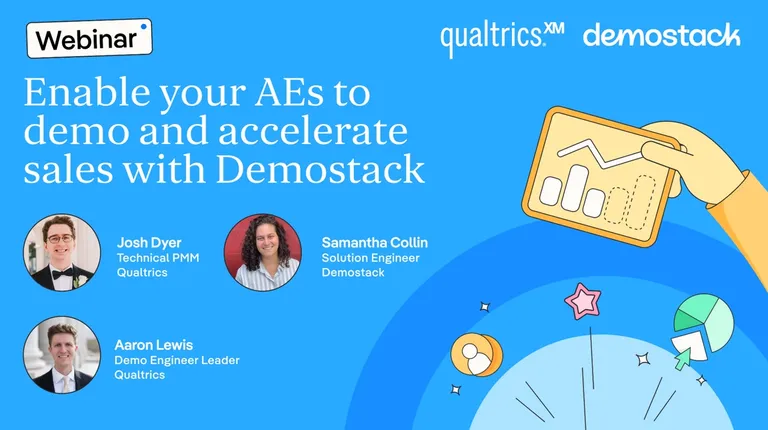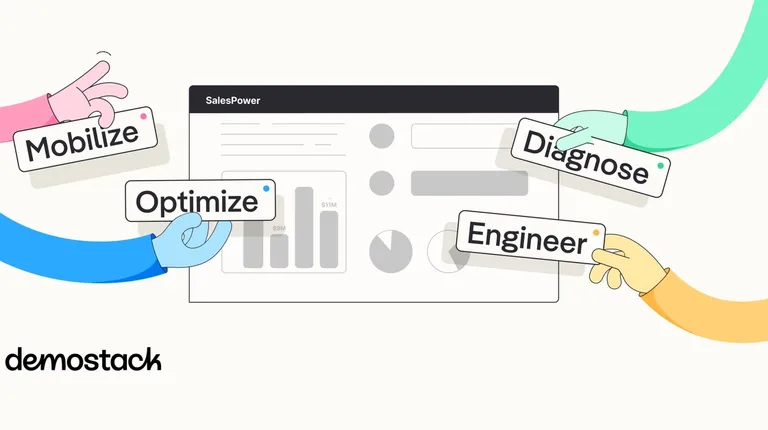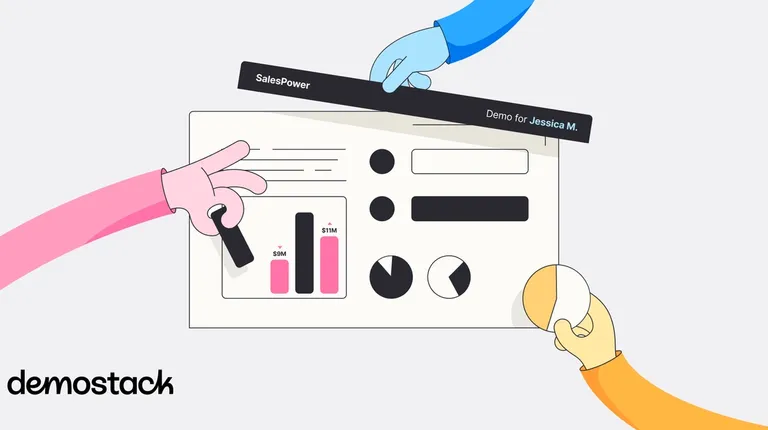Most sales orgs spend months onboarding new sellers and still end up with reps who can't confidently show the product. They rely on SEs. They only know one way through the demo. Or they avoid it altogether.
It’s not a training issue. It’s a system issue. And the fix isn’t complicated—yet too many sales orgs overlook it.
A structured demo certification program can help your entire team tell a consistent product story, improve first-call execution, and speed pipeline —without adding more enablement headcount or dragging out onboarding.
Teams like Motive made demo certification part of their enablement process—and saw measurable results:
- 15% increase in trial conversions
- 10% lift in win rates
- Fewer demo handoffs. More confident reps.
And the best part? You don’t need a week-long bootcamp to get started. This post breaks down how to structure demo certification with the Crawl–Walk–Run model—with product tours, sandbox environments, and simple scorecards.
Why Demo Certification Matters
If your reps are still defaulting to “Let me loop in an SE,” that’s not just inefficient—it’s slowing deal progress. Demo certification gives you a scalable way to validate whether a rep can actually run a product conversation whether it’s a rep’s first month or their third year. It’s not about memorizing a script. It’s about navigating the product, connecting features to value, and adapting on the fly.
The benefits go beyond sales:
- SEs stop being the crutch
- Enablement gets a measurable benchmark
- Product marketing sees message consistency
- CS and presales speak the same product language
Whether you're onboarding a new seller or upleveling the team, the goal is the same: give reps the skills, space, and structure to confidently show your product—and prove they can do it.
From Good to Great: Motive Made Demo Certification a Cornerstone of Enablement
Before introducing formal demo certification, Motive’s sales reps leaned heavily on SEs to deliver technical demos. Product knowledge varied across the team, and even experienced reps struggled to tell a consistent story.
So they made demo enablement a priority.
Sellers followed a structured path: guided product tours, sandbox-based practice, and a recorded demo walkthrough. The bar was clear: be able to run the demo start to finish, without needing backup.
To make it stick, they launched a “Beat the Boss” challenge—where reps competed to out-demo their CEO in a bracket-style tournament. Certification became more than a requirement. It became a cultural milestone.
The results:
- 15% increase in trial conversions
- 10% lift in win rates
- Reps who could confidently show the product—without waiting on an SE
How to Structure a Demo Certification Program: Use the Crawl–Walk–Run Model
The best demo certification programs aren’t built around checklists—they’re built around real learning. The Crawl–Walk–Run model works because it builds confidence step by step, using tools your team already understands: product tours, sandbox environments, and internal playbooks.
Crawl: Learn the product story
Sellers don’t need full platform access at this stage—they need context. What does the product do? Who is it for? What problems does it solve?
At Motive, this starts with guided product tours that walk through core workflows, narrated with persona context. These aren’t generic walkthroughs—they’re tailored to real-world scenarios, like “coaching a driver” or “triggering an alert.”
Other teams compile libraries of annotated demo recordings from top reps, helping new sellers see how to tell the story—not just what to say.
The goal here is orientation, not mastery.
Walk: Practice in a sandbox
Once sellers understand the story, they need a safe space to practice telling it.
That’s where demo sandboxes come in. These are clean, demo-ready environments designed for learning—not production. No backend issues. No live data. Just a place to explore workflows, rehearse talk tracks, and build confidence.
At Motive, reps walk through curated “golden nugget” scenarios—pre-sequenced examples that are ready to show out of the box. Reps rehearse on their own, then pressure-test with a peer or coach.
This stage is all about comfort and consistency: Can the rep navigate the flow? Connect features to outcomes? Recover when something goes off-script?
Run: Apply and certify
Now it’s time to perform.
Reps either record a full demo walkthrough or present live to a manager, peer, or enablement lead. It’s not about perfection. It’s about fluency, structure, and control.
At Motive, the “Beat the Boss” challenge turned this final stage into something competitive—and memorable. Reps competed in a bracket-style tournament to out-demo the CEO. The result? Stronger demos, a shared standard, and a culture of storytelling.
Certification formats vary, but the goal stays the same: reps should be able to lead a product conversation on their own—before they face a live prospect.
What Good Looks Like
You don’t need a massive training program to make demo certification work. You need a clear standard—and a way to reinforce it early.
Here’s what we’ve seen top teams do:
- Set the expectation: “You’ll be certified in 30–45 days”
- Define “good” with examples and a simple scorecard
- Use product tours, sandbox practice, and live reviews—not heavy LMS modules
- Keep it light, but visible—and consistent across the org
This isn’t about gatekeeping. It’s about giving your team a repeatable way to deliver better product conversations.
Final Takeaway: If You Want Consistency, Certify It
The fastest way to tighten your pipeline isn’t another pitch workshop. It’s stronger product conversations. A good demo doesn’t just show features—it makes value real. It builds trust. It moves deals forward. And if your sellers can’t run one—on their own, early, and well—you’re leaving revenue on the table.
So stop assuming they’ll figure it out. Certify them.





